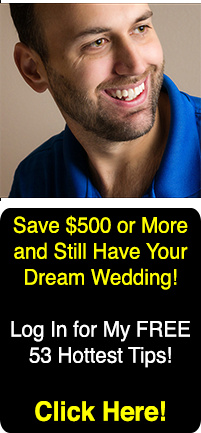How to Get Amazing Fireworks Photographs


Fireworks photography is one of the themes just about every photographer tries to shoot. But beginners struggle because it defies automated shooting. To make fireworks shooting easier, switch to manual mode and understand a few guidelines that will help you get better pictures.
Equipment
A DSLR is recommended for better manual control and file quality but not required. A tripod is a given, but there are a few other equipment considerations. The choice of lens is entirely subjective. In my example, I used a 12-24 mm, but I could have easily used a 70-200 to change the composition and make the fireworks bigger. With a compact camera, you'd simply zoom until you have the composition you want. In the image above, I composited several explosions into one frame in Photoshop because with the wide lens the fireworks were too small in single frames. If you're at a small show and are closer to the fireworks, 35 mm focal length might be better.
High ISO is unnecessary as you want the fireworks to create trails and you'll be using a tripod, so ISO 100 to 200 works well, no need for an expensive high ISO camera. A cable release is strongly recommended for bulb exposures, but in a pinch you could set the self timer to two seconds, set the shutter speed manually, and use exposure delay mode to enable the mirror to flip up and eliminate vibrations before the shutter opens. There's also no need for any UV or polarizing filters.
Other accessories to bring include a pocket flashlight, rain gear for you and the camera if rain is expected, a piece of black cardboard to cover the lens, and snacks.
Focus
Leave the focus on manual. The rule of thumb is to set the focus to infinity and then back off a notch. Since you're on a tripod and you want the fireworks to spread, a small aperture like f/11 is perfect for bringing the entire scene into good focus. You could also use a depth of field tool (Field Tools Depth of Field Calculator for iOS or ExpoAperture2_Depth of Field_Guide for the pocket) to calculate where to set the focus to make sure the entire scene is in focus. There's simply no need to use auto focus.
Exposure
It's too dark to do any meaningful metering of fireworks, so switch to manual exposure mode. Program mode won't work because the camera will try to expose to make the black sky gray, so the exposure will be too long. Metering the fireworks themselves doesn't work because they aren't bright enough. The burning streaks are enough to register on the sensor, but the explosions themselves aren't enough to light up the whole sky or area or provide a useful meter reading. Instead, rely on the experience of other photographers and use a few exposure guidelines that will get you in the ballpark very quickly as the conditions for shooting fireworks don't change much. Start with the following settings:
- Manual exposure
- ISO: 100
- Aperture: f/11
- Shutter: 20 sec. (Use bulb mode and cable release with timer for best results)
- Long-exposure noise reduction ON
That's really all there is to a foundation for good fireworks photos. Start with these settings -- with any camera and lens -- and then adjust as necessary. You may think 20 seconds is a long time, but it takes up to three or four seconds just between launch and explosion of most fireworks, and you want multiple fireworks to register on the exposure. A cable release helps because you can hold the shutter open however long you want for each exposure without setting shutter speed or vibrating the camera. You can vary the exposure triangle; for example, use 10 sec. @ f/8. If the fireworks are much closer, 3 sec. at f/8 may work. These are just starting points. You can also experiment with foreground elements, landscape elements, using flashlights to illuminate foreground elements. You can use a black card to block light in between fireworks as you hold the shutter open. Experiment and have fun.
The image you see on this page is a result of about 15 minutes of work between shooting and editing. See what you can do next time you see a fireworks show.
Some other links you may appreciate:
How to Photograph Fireworks Displays Like Joe McNally
8 Tips for Mastering Firework Photography

